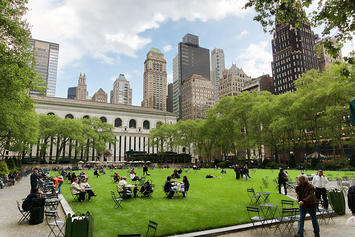
My latest report is now available from the American Enterprise Institute. It’s a look at the role of the culture of cities in economic dynamism and resiliency. I examine a few case studies, and from these try to draw out some cultural traits that seem to be relevant to success, notably an open social structure, invested leadership and institution building by civic elites, and a high value placed on education.
Here is an excerpt:
If the culture of a place is important to economic and civic success, yet is rooted in the past, perhaps even in the character of the founding of a place, is it possible to change it? The writers above offer a qualified yes.
First, local leaders should seek to understand their local culture. Because culture is in some ways the air we breathe, we do not always see or understand it. Much of culture is tacit and unwritten, complicating understanding. While corporate leaders often see culture as a source of competitive advantage and are highly intentional toward their corporate culture as a result, few political or civic leaders seem to do the same.
The first step then is for local leaders to gain an understanding of their own place and its culture. As with the case studies above, this is often simplified by the comparative historical case-study method. Leaders seeking to understand the culture of, for example, Columbus, Ohio, might contrast their city’s founding and historic development with that of Nashville, Tennessee. Or perhaps conduct a comparison of the three major cities of Ohio—Cincinnati, Cleveland, and Columbus, sometimes referred to as the “3C’s” inside the state.
Because of the outsized role of the founding generations in determining the long-term trajectory of a place’s culture, particular attention should be paid to them and their cultural origins. As Saxenian said of Route 128, “To be sure, regional institutions and culture are difficult to change. An industrial system is the product of historical processes that are not easily imitated or altered. However, the first step toward the regeneration of the Route 128 economy is self-understanding.”
Click over to read the whole thing.
This piece first appeared on aaronrenn.com.
If you haven’t done so, please sign up for Heartland Intelligence, Aaron's monthly research briefing on this critical region of the country heading into the 2020 election.
Cover image photo credit: Jean-Christophe Benoist CC BY 3.0
Aaron M. Renn is an opinion-leading urban analyst, consultant, speaker, and writer on a mission to help America’s cities and people thrive and find real success in the 21st century. He also regularly contributes to and is cited by national and global media outlets, and his work has appeared in the The Guardian (UK), The New York Times, and The Washington Post, along with many others. Renn was a Senior Fellow at the Manhattan Institute from 2015-2019 and is a Contributing Editor at its quarterly magazine City Journal.












